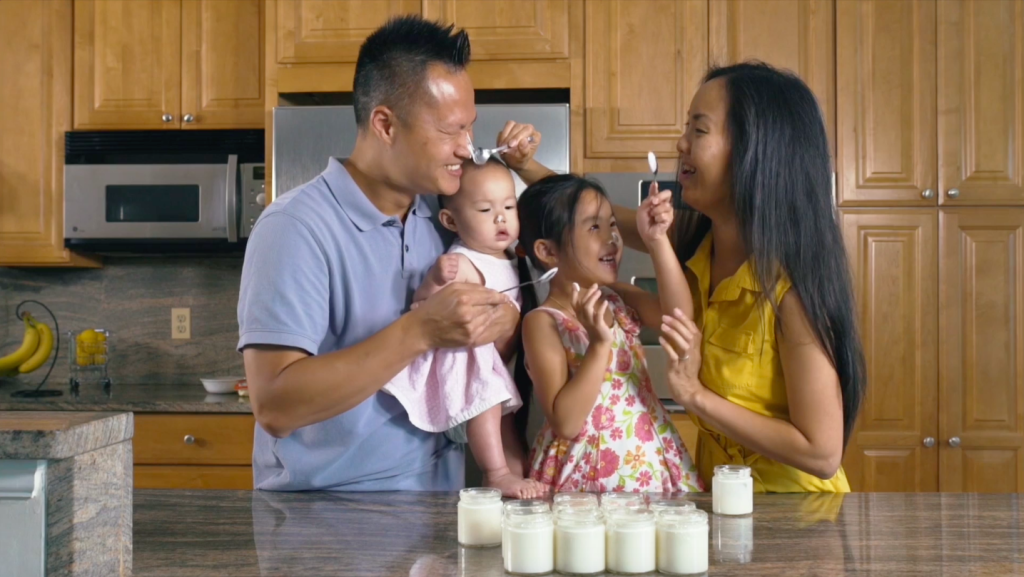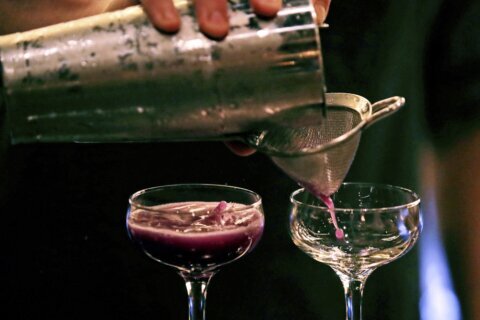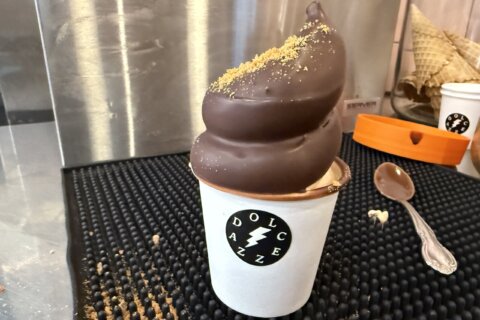WASHINGTON — Small plastic containers that are decorated with colorful cartoon characters and filled with a purple-hued goop are no longer the only option when it comes to yogurt.
These days, grocery store shelves are packed with everything from grass-fed yogurts to goat milk yogurts, and even Greek, Icelandic and Australian yogurts. And soon, Vietnamese yogurt may be among that selection.
Five years ago, Fred Chen and Phuong Nguyen, of Rockville, Maryland, had a picky eater on their hands — or rather, a picky drinker. Their then-1-year-old daughter, Madeline, refused milk.
“She would just sit there for hours and then fall asleep sometimes at the table,” Chen said about the couple’s attempts to get their daughter to drink milk.
Desperate to get some sort of dairy nutrition into the toddler’s diet, the couple turned to yogurt, but they were discouraged by the high levels of sugar (some brands pack more than 20 grams in each serving) and additives in the typical brands.
“And the healthier yogurts were too chalky and too sour,” Nguyen said.
That’s when they tried Vietnamese yogurt. Nguyen asked her dad for the yogurt recipe he used to make her growing up — “and lo and behold, Madeline thought it was amazing,” Chen said.

The main difference between Vietnamese yogurt and traditional yogurt is that Vietnamese yogurt is made with sweetened condensed milk, a thicker form of milk from which water is removed.
Yogurt was first introduced to Vietnam in the 1800s when it was colonized by the French. Because of the lack of fresh dairy in Vietnam at the time, the Vietnamese swapped fresh milk for cans of shelf-stable sweetened condensed milk. This gave their yogurt a sweeter, more caramelized taste.
Canned sweetened condensed milk doesn’t get the best reputation when it comes to nutrition, so Chen and Nguyen make their own by reducing organic whole milk and small amounts of organic cane sugar for hours at a time. When it reaches a thick consistency and golden color, whole milk and live active cultures are added, and after incubation, the yogurt is ready to eat.
The couple’s daughter wasn’t the only one impressed with the three-ingredient homemade yogurt. Soon, family and friends were asking for orders. That prompted Chen and Nguyen to turn their baby’s breakfast into a business, which they call YaÜ (a phonetic version of the Vietnamese spelling for yogurt: da ua).
For the past eight months, Chen and Nguyen have been transferring production from their kitchen to a 30-gallon vat pasteurizer in central New York, where they partner with small dairy farmers to source their organic milk. With the help of a Kickstarter campaign, they are hoping to scale up to an industrial-sized 600-gallon vat pasteurizer so they can sell their Vietnamese yogurt in stores throughout the D.C. area.
The taste of YaÜ is slightly sweet and tangy; the mouthfeel is thick and creamy. Those used to plain Greek yogurt will find familiarity (although YaÜ is not nearly as sour). Each 4-ounce serving of YaÜ has 100 calories, 4 grams of protein and 6 grams of added sugar (11 grams total), plus added health benefits from whole milk.
Chen and Nguyen have plans to make additional flavors in YaÜ’s lineup, including organic blueberry lavender, organic mango coconut and organic lemon ginger.
Keep your eyes — and taste buds — peeled.
Watch YaÜ’s Kickstarter video:







